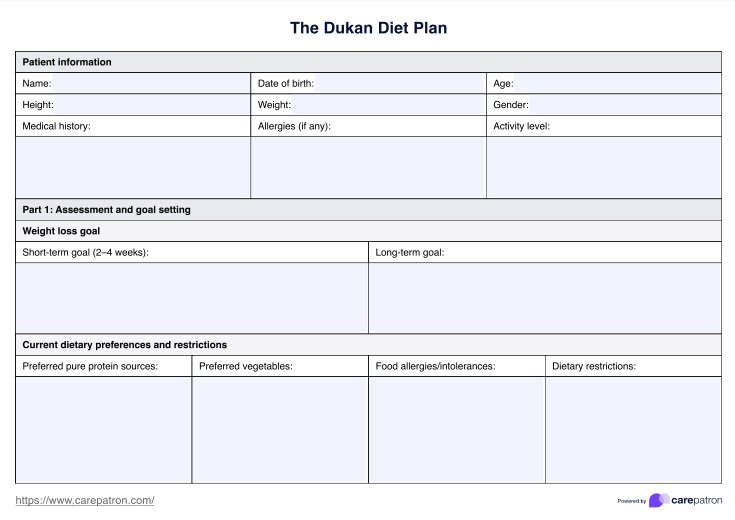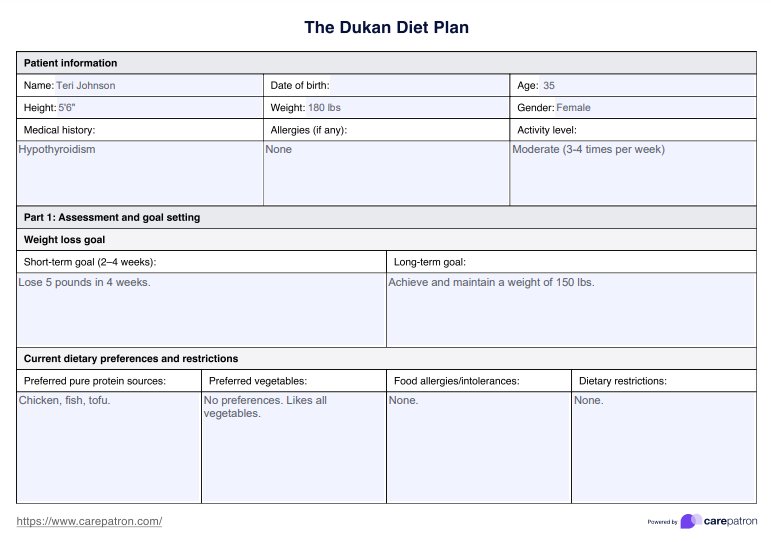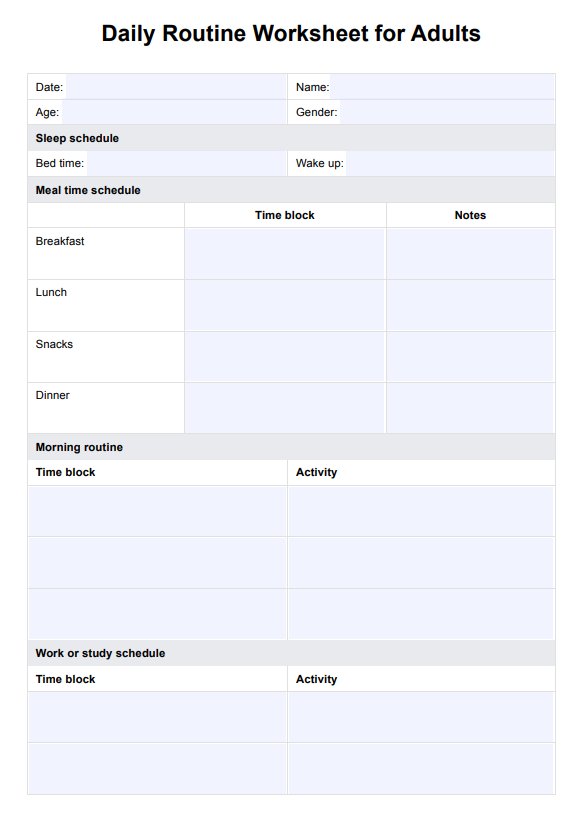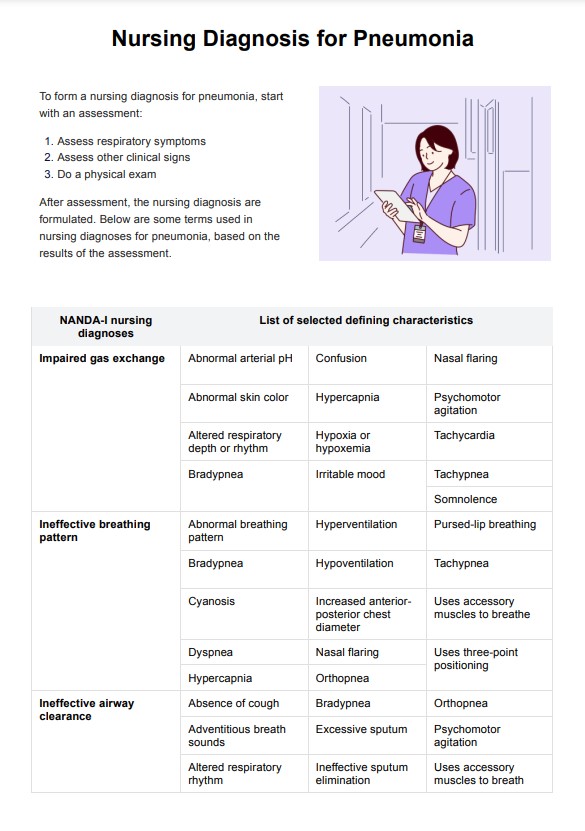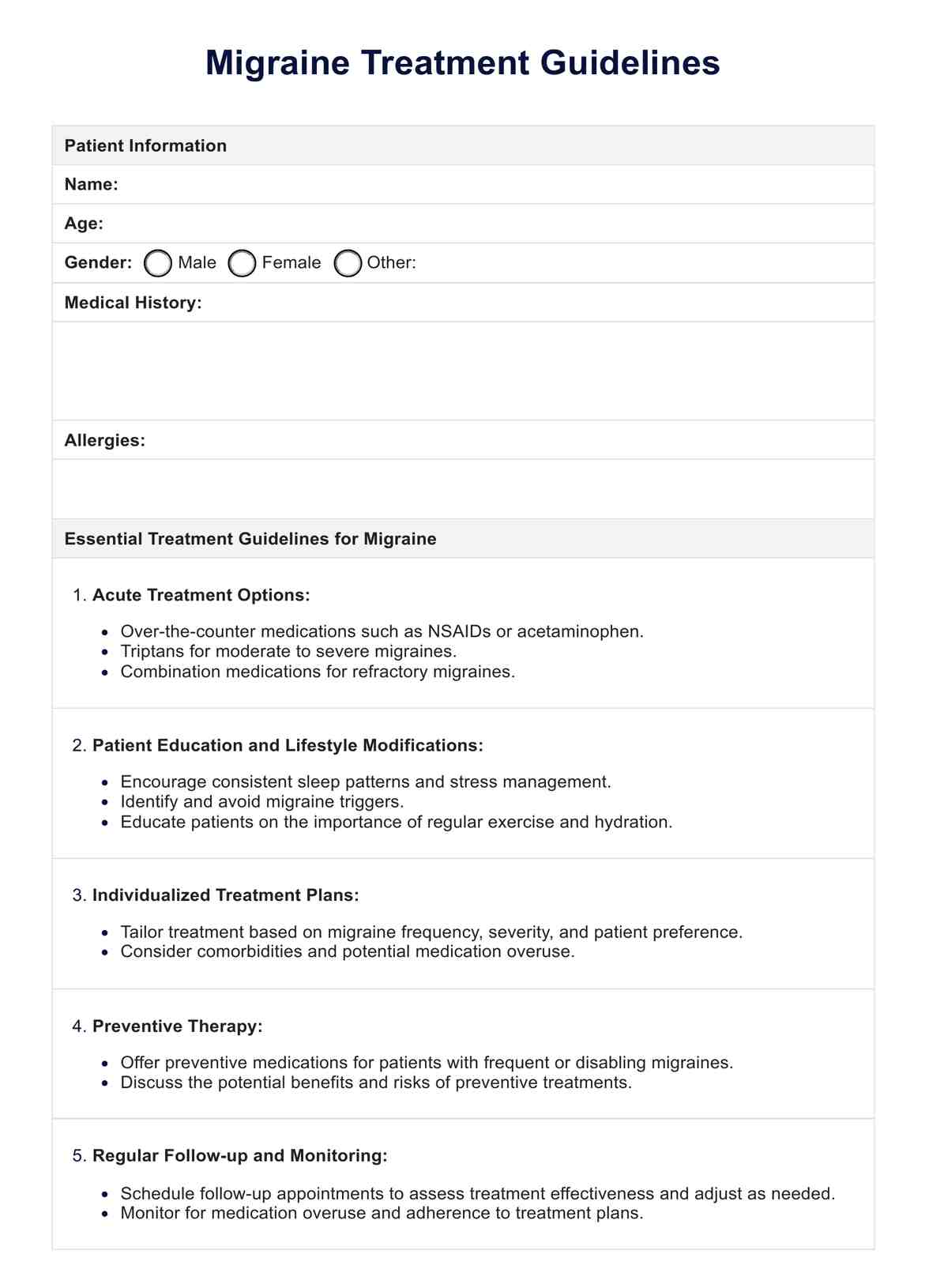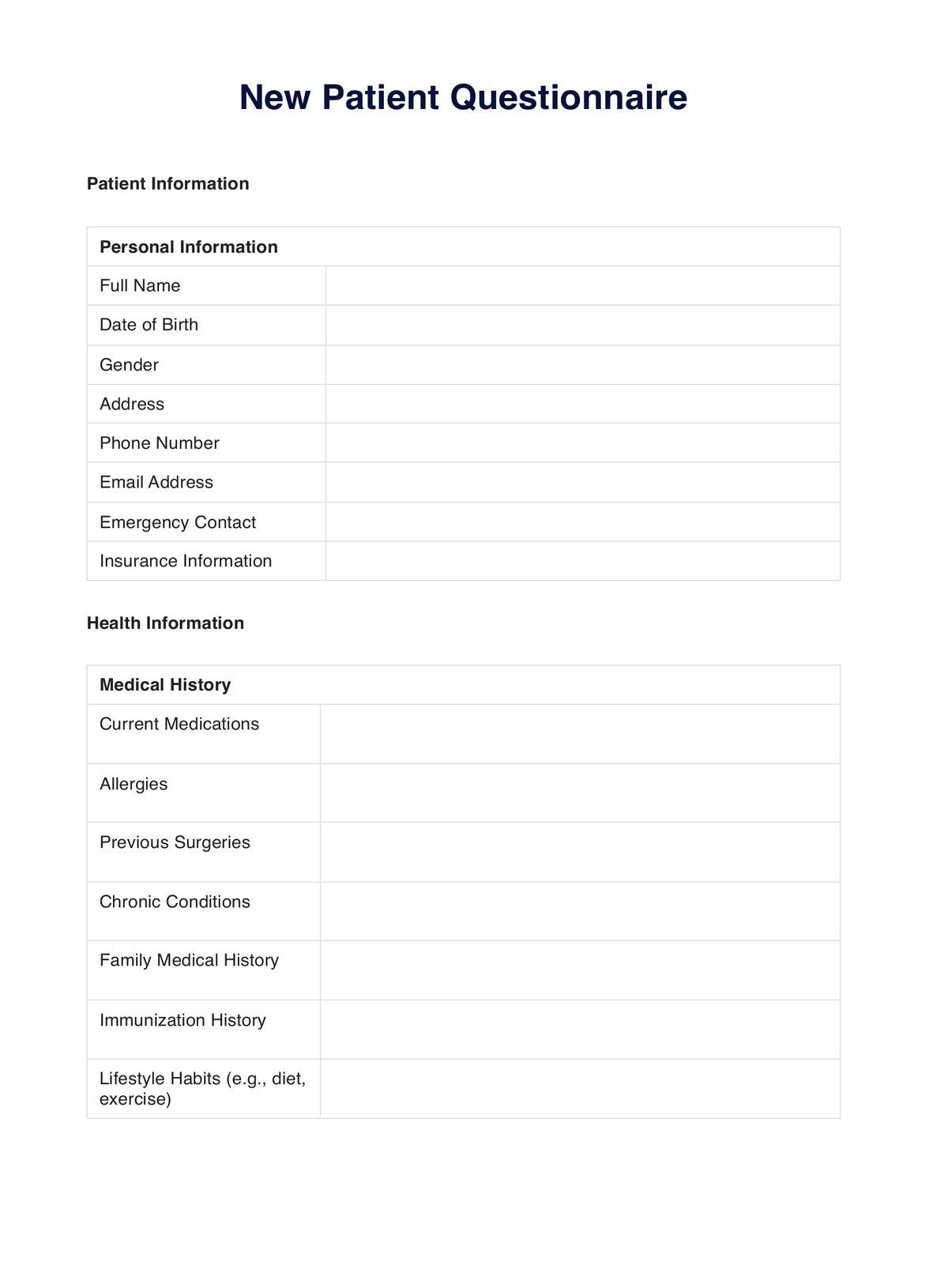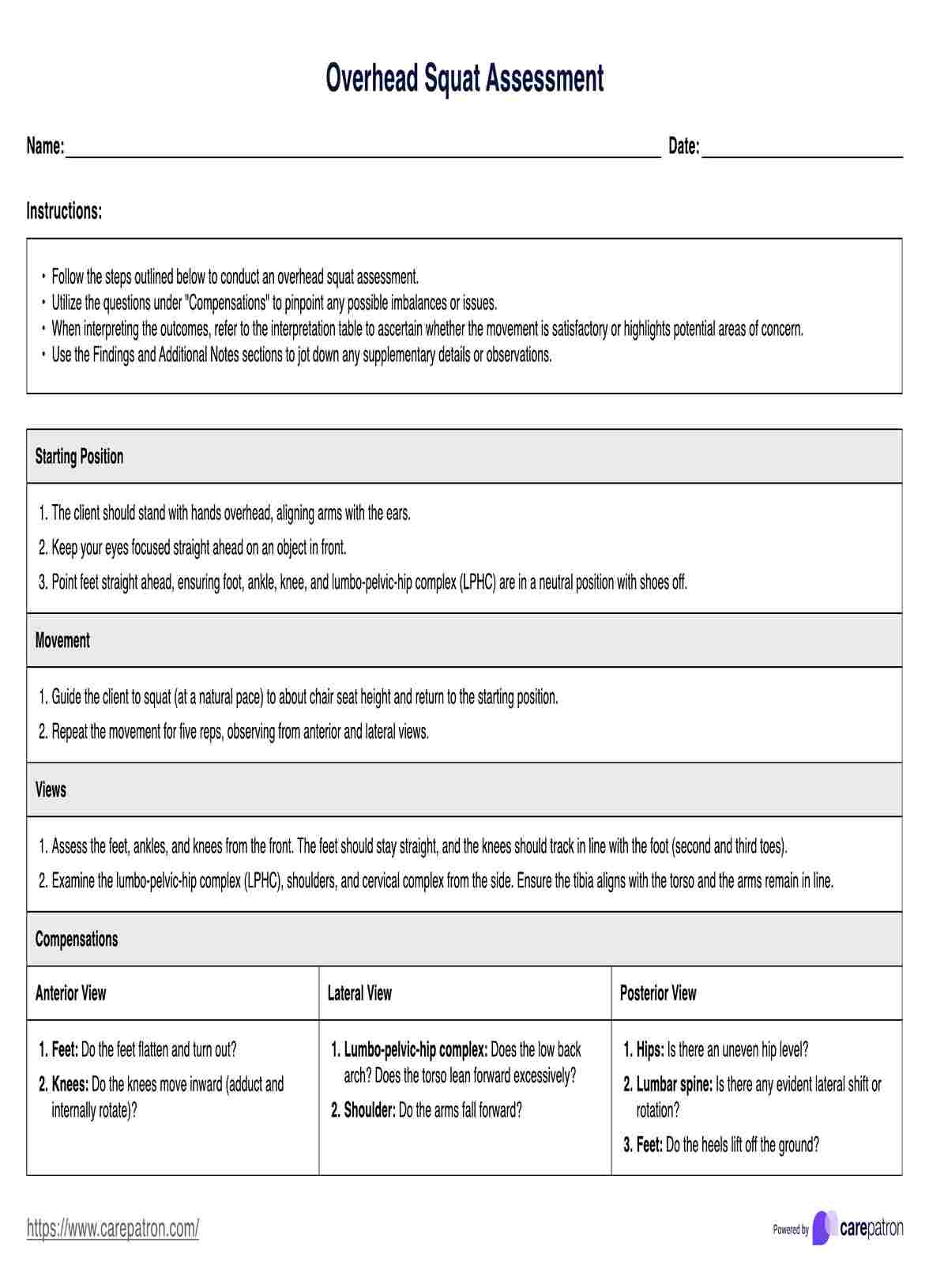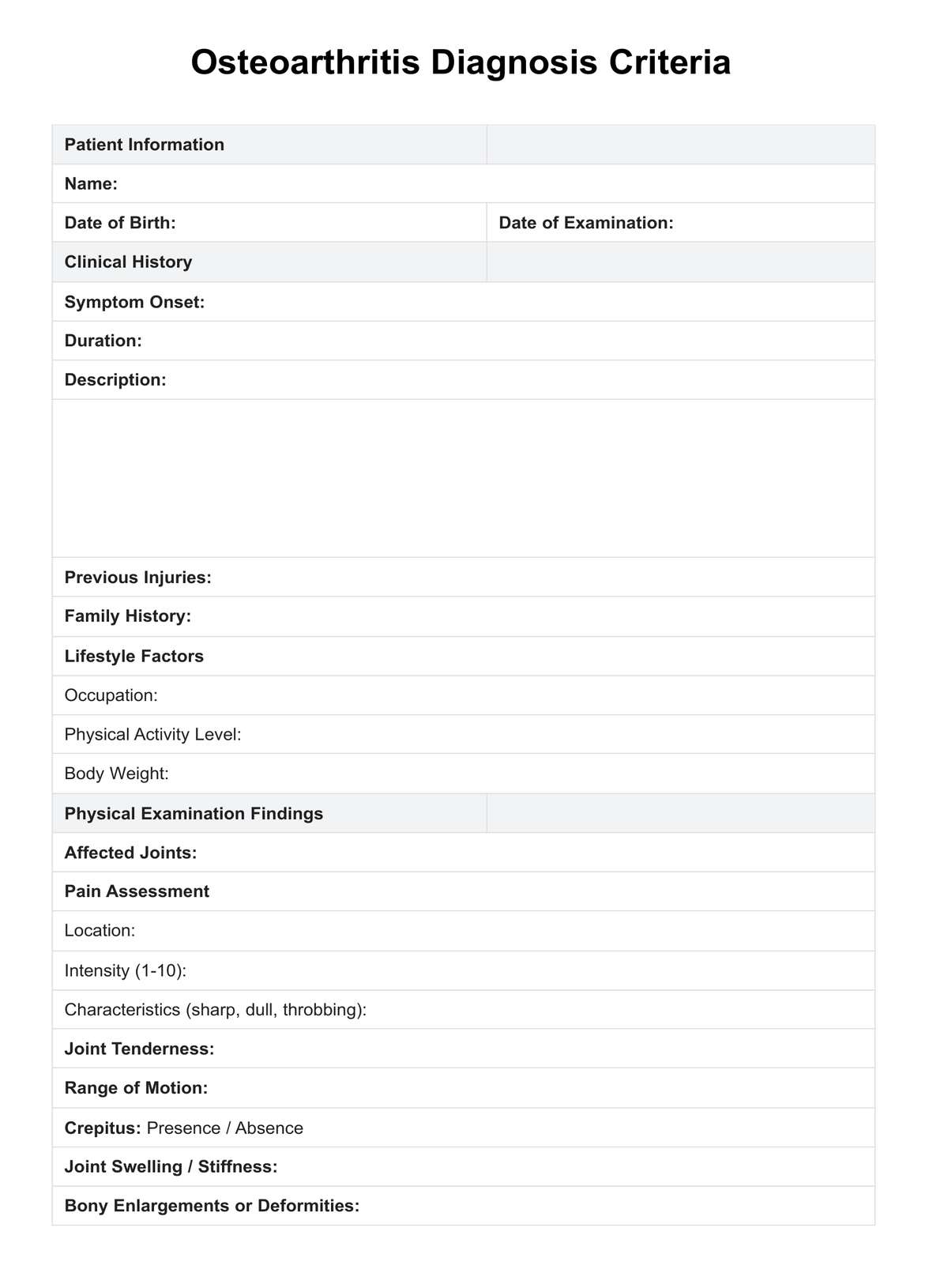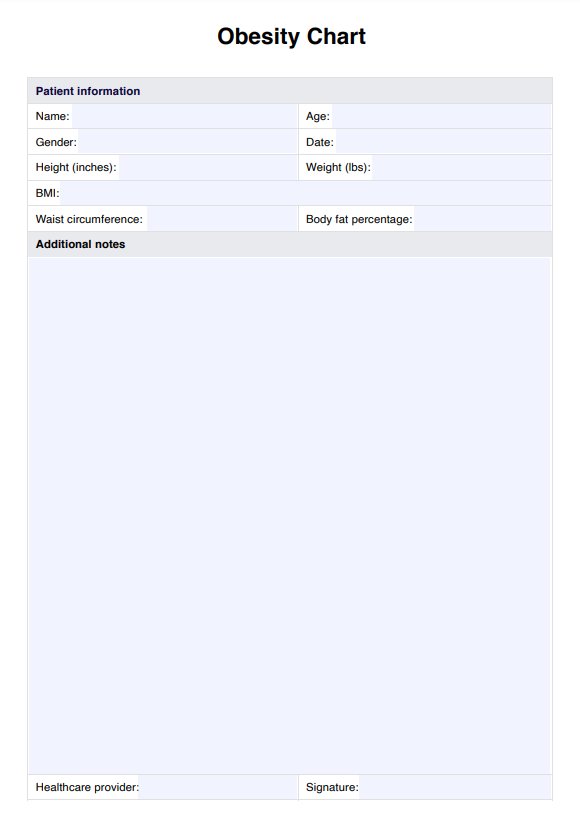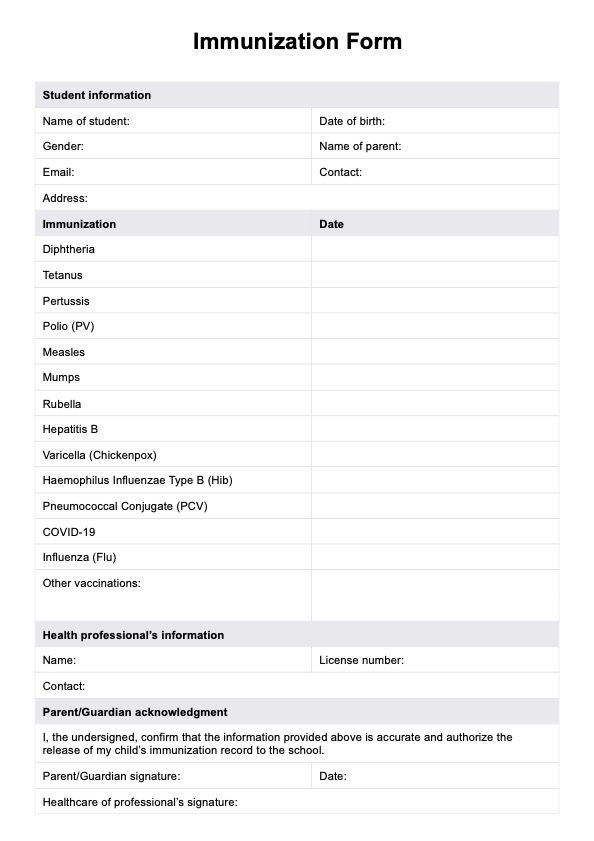The Dukan Diet Plan
Help your patient set goals and craft personalized meal plans based on the Dukan Diet with our free Dukan Diet Plan Template.


What is the Dukan Diet?
The Dukan Diet, also known as the high protein Dukan Diet, developed by esteemed French nutritionist Dr. Pierre Dukan, stands out as a popular and effective weight loss plan promoting a healthy diet. It comprises four phases: attack, cruise, consolidation, and stabilization, and prioritizes high protein intake while limiting carbohydrates and fats. The approach aligns with the principles of high-protein diets and may lead to rapid weight loss by having the patient undergo the structured progression through different weight loss phases to achieve sustainable results. Aside from that, the emphasis on having pure protein days within the Dukan Diet facilitates weight loss and aligns with a broader focus on cardiovascular health, reducing the risk of cardiovascular disease.
With regards to the Dukan Diet cost, the financial investment associated with the diet is a multifaceted consideration influenced by individual food choices, preferences, and regional pricing. Unlike specialized or trendy diets that may involve costly superfoods or exclusive supplements, the diet's foundation rests on readily available everyday ingredients. This characteristic makes it relatively adaptable to various budgetary constraints.
In essence, the Dukan Diet requires a dedicated to structured plan that prioritizes a healthy diet emphasizing unlimited lean protein intake to support sustained weight loss and overall well-being. For more information, you may head to the Dukan Diet website.
The Dukan Diet Plan Template
The Dukan Diet Plan Example
Phases of the Dukan Diet
The following are the four phases of the Dukan Diet:
Dukan Diet attack phase
The attack phase marks the initiation of the Dukan Diet, focusing on jumpstarting weight loss. Typically lasting 2 to 7 days, depending on how much weight the individual wants to lose, this phase involves consuming lean protein, kickstarting the metabolic process, and setting the tone for the subsequent phases.
Dukan Diet cruise phase
The cruise phase follows the Attack Phase, alternating between pure protein days and days incorporating protein and vegetables. This phase persists until the individual achieves their desired weight, emphasizing a balanced approach to nutrient intake.
Dukan Diet consolidation phase
As the name suggests, the consolidation phase is a strategic step in preventing the rebound weight gain often associated with weight loss. It gradually reintroduces certain foods, including carbohydrates like whole grain bread, back into the diet. This phase lasts approximately five days for every pound lost during the preceding phases.
Dukan Diet stabilization phase
The stabilization phase is the final phase. It is the maintenance stage to prevent future weight gain. It encourages a return to a more balanced diet, incorporating a wider variety of foods. Unlike the other phases, the stabilization phase has no fixed duration, emphasizing a lifelong commitment to a healthy lifestyle.
How does our Dukan Diet Plan Template work?
Our Printed Dukan Diet Plan Template is a structured guide designed to align with the diet's principles, emphasizing high-protein, low-carb intake. Keep reading below for more information on how to make the most of the Dukan Diet guide and Dukan Diet food plan template.
Step 1: Assessment and goal setting
You can begin by assessing your patient's current weight, health status, and weight loss goals. Focus specifically on achieving a high-protein, low-carb balance. This assessment forms the basis for creating a personalized plan.
Step 2: Understanding the phases
The Dukan Diet comprises four distinct phases—attack, cruise, consolidation, and stabilization. The template outlines the specific guidelines for each phase.
Step 3: Creating a meal plan
The template offers a framework for crafting daily or weekly meal plans prioritizing high-protein diets and low-carb foods. The plan also includes spaces for additional notes and instructions, such as adding vegetables and avoiding starchy foods. You can also refer to the sample meal plan to get started.
Benefits of following the Dukan Diet
The Dukan Diet, which focuses on a high-protein diet, strategic use of oat bran, and structured phases, provides a comprehensive and adaptable approach to weight loss. This helps individuals achieve their initial goals and supports long-term weight maintenance.
Rapid initial weight loss
The Dukan Diet is notably recognized for its capacity to induce rapid initial weight loss, primarily attributed to the first phase. Promoting a high-protein diet, this phase kickstarts the metabolic process, encouraging the body to utilize stored fat for energy. Individuals often experience a quick reduction in overall body weight, providing an initial boost to their motivation to lose weight.
Structured approach
One of the Dukan Diet's key strengths is its structured and organized approach to weight loss. The diet is meticulously divided into four distinct phases, each serving a specific purpose. This structured framework, combined with a high-protein diet, provides clear guidance and aids in preserving lean muscle mass, a crucial factor in achieving and maintaining weight loss goals.
Protein emphasis
A standout feature of the Dukan Diet is its strong emphasis on protein consumption throughout all phases. Proteins play a crucial role in preserving lean muscle mass, especially during periods of weight loss when the body tends to break down muscle tissue for energy.
Flexible duration
Another advantageous aspect of the Dukan Diet is its flexibility in duration, allowing individuals to tailor the plan to their specific weight loss goals. Whether individuals aim to lose weight rapidly or adopt a more gradual approach, the diet accommodates diverse timelines. Including particular components, such as tablespoons of oat bran, offers flexibility and adds a practical aspect to the diet, contributing to its sustainability.
Maintain weight loss
Beyond rapid weight loss, the Dukan Diet addresses the critical aspect of weight maintenance. The latter phases, particularly the consolidation and stabilization Phase, focus on gradually reintroducing certain foods, including oat bran.
Cons of the Dukan Diet
If your patient is planning to embark on the Dukan Diet, you must not only explain the benefits but also remind them of the risks and cons so they are well-informed.
Restrictive nature to lose weight
The Dukan Diet, known for its emphasis on a protein diet and tablespoons of oat bran, is deemed highly restrictive. This can pose challenges for long-term adherence, limiting food choices and variety, potentially affecting the ability to lose and maintain weight.
Potential side effects
Following the Dukan Diet may lead to side effects like constipation, bad breath, and headaches. Oat bran and fat-free dairy may play a role in these effects, impacting individuals' overall experience of the diet.
Long-term sustainability
Despite its potential for rapid weight loss, the Dukan Diet's restrictive nature raises concerns about long-term sustainability. The specific phases and limitations may be challenging to maintain over time, affecting the ability to lose weight consistently.
Risk of nutrient deficiencies
The Dukan Diet's focus on a high protein diet may pose a risk of nutrient deficiencies, as certain food groups are restricted. Excluding or limiting foods may result in imbalances, emphasizing the importance of careful planning and potential supplementation.
Not universally suitable
The Dukan Diet may not suit everyone, particularly those with specific health conditions. Before starting, your patients should consider its compatibility with their unique health circumstances, as the diet's emphasis on certain foods may not align with diverse dietary needs.
Commonly asked questions
Yes, eggs are allowed and encouraged in the Diet. They are an excellent source of high-quality protein and essential nutrients, aligning with the diet's emphasis on protein consumption.
Yes, black coffee is permitted in moderation on the Dukan Diet. However, to maintain the diet's principles, sugar or high-fat dairy products must be avoided.
While both diets emphasize protein intake, the Dukan diet and the keto diet differ in their approach. The Dukan Diet includes more variety with distinct phases, gradually reintroducing certain foods. In contrast, the keto diet focuses on a high-fat, low-carb diet without the structured phases seen in the Dukan Diet. The critical similarity lies in their shared emphasis on protein consumption.


